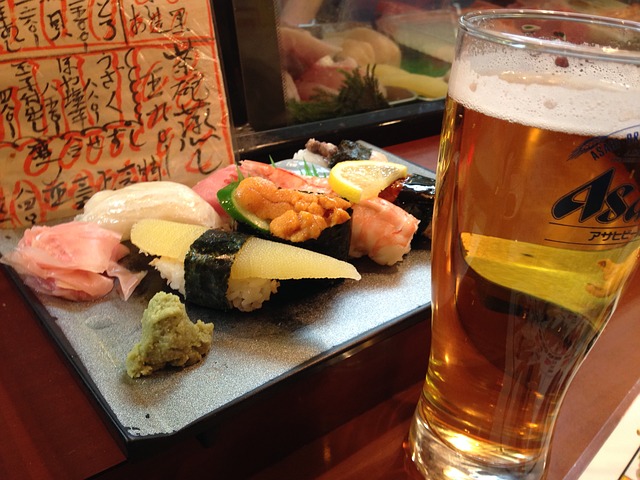
These days, it’s truly amazing how fast the restaurant industry and food reviews are evolving. New technologies and the social media boom have fueled new trends. This has changed the way we find, consume and discuss food.
A restaurant can quickly move from obscurity to fame. Popularity is driven by photos, videos and sharing across platforms. This creates new dining experiences and business models. We’ll dive into the trends that are evolving our modern cuisine.

1. **The Viral Allure of the Queue**: Nowadays going to wait in line for a restaurant you think is worth visiting seems to have become an integral part of modern dining culture. We turn to Noodle House on Old Compton Street as a prime example of this phenomenon.
The restaurant has gained online notoriety for its noodles, including the popular hand-pulled noodles doused in oil and paprika. You can witness the long waits in the Charing Cross Road neighborhood. This long line is a true reflection of the online buzz. The restaurant opens promptly at noon, and the line usually starts at 11:25 a.m. By 11:40 a.m., the line can stretch to more than a hundred feet long.

2. **Queueing as a Pastime and Shared Experience**: Even though there are other places nearby that serve equally delicious noodles, most people still choose to wait in line here. Some tourists have questioned the long wait, but in the end, they often stay. This behavior reveals a larger trend in the current phenomenon of queuing, which is that queuing itself constantly generates more queuing behavior. Participating in this craze has a unique value in itself, which is not entirely related to the food itself.
3. **Exploring Noodle Inn’s Signature Chilli Oil Spill Noodles**: The restaurant’s menu is very simple and straightforward, offering only a few dishes. The chili oil noodles are the signature dish here. Critics recommend that customers focus on trying these specific noodle options, such as beef, chicken, or pork versions. These dishes are all topped with a generous amount of spicy chili oil.
These noodles are nearly as wide as lasagna noodles. Their thick, smooth surface is ideal for holding various toppings. They carry garlic, pepper, cumin, cilantro, and delicious oil.

4. **Beyond the Noodles: Other Dishes and the Hype’s Limitations**: Try other items beyond the main star attraction too. The deep-fried prawn dumplings with wasabi mayo were incredible. The shredded duck burger with hoisin sauce was less successful. The duck inside was found to be a little dry often. Not every offering at a viral spot lives up main hype.
5. **Introducing Wonder: The App-Based Food Hall Concept**: In addition to the signature dishes here, other dishes have also received a lot of positive reviews online. For example, the fried shrimp dumplings with mustard mayonnaise are also quite impressive. However, some reviews have noted that the char siu sauce duck meat burger was not very successful, with some customers finding the duck meat portion to be slightly dry. However, not every popular restaurant’s dishes can live up to the hype. Another drawback is that this restaurant has no desserts available, which many people find disappointing.

6. **The Operational Engine: Central Prep and In-Store Finishing**: About 18 months ago, Wonder’s stores began opening one after another. Wonder has always managed the entire process internally. They assembled a team of culinary engineers who worked with these chefs for several months. Their task was to ensure the scalability and efficient delivery of menu items.
The core of Wonder’s efficiency lies in its central kitchen. Daily, dishes are sent to Wonder stores in kit form, with final processing steps completed in-store based on orders. This model shares similarities with meal kit brand Blue Apron. However, Wonder acquired Blue Apron the previous year.
The company’s Chief Marketing Officer emphasized that this is not simply heating or reheating. The final processing steps are so simple that non-chef staff can complete them. Employees work in fully electric kitchens with no open flames. This highlights the controllability and standardization of the process.

7.**The Social Media Influencer vs. The Traditional Critic**: More and more people these days are checking out social media reviews before sampling a meal, believing the glowing recommendations are very enticing.
These reviews may look great, but you need to realize that it’s not always truly objective. Restaurants know when the influencers are coming. That’s when they feel pressure to be on their best behavior. This means they might get special treatment and maybe the chef will serve them top-notch dishes. This makes the whole experience incredibly elevated. And the meal is usually free, too. Or, the influencer gets paid for their visit.
The relationship is often like the business deals you see, where the influencer gets paid or free food. The restaurant, in turn, gets publicity in return, a transaction that is often hidden from them. They tend to focus more on visuals than actual flavor. That’s how they get engagement online.
If you want to find real reviews from regular people. Sites like OpenTable, Yelp and Google Reviews work well. These customers don’t promote the restaurant themselves and their feedback is usually more trustworthy.
The trend today is to use your phone to order food through sophisticated apps, the way food is discovered, consumed and talked about these days is always changing, and there’s no telling what the next new trend will look like, we’re just starting to see what’s next for it.
Related posts:
Noodle Inn, London W1: ‘Queue, order, pay, get out’ – restaurant review
Wonder Is Everywhere, But What Is It?
Why You Should Avoid Restaurants Full Of Influencer Reviews




